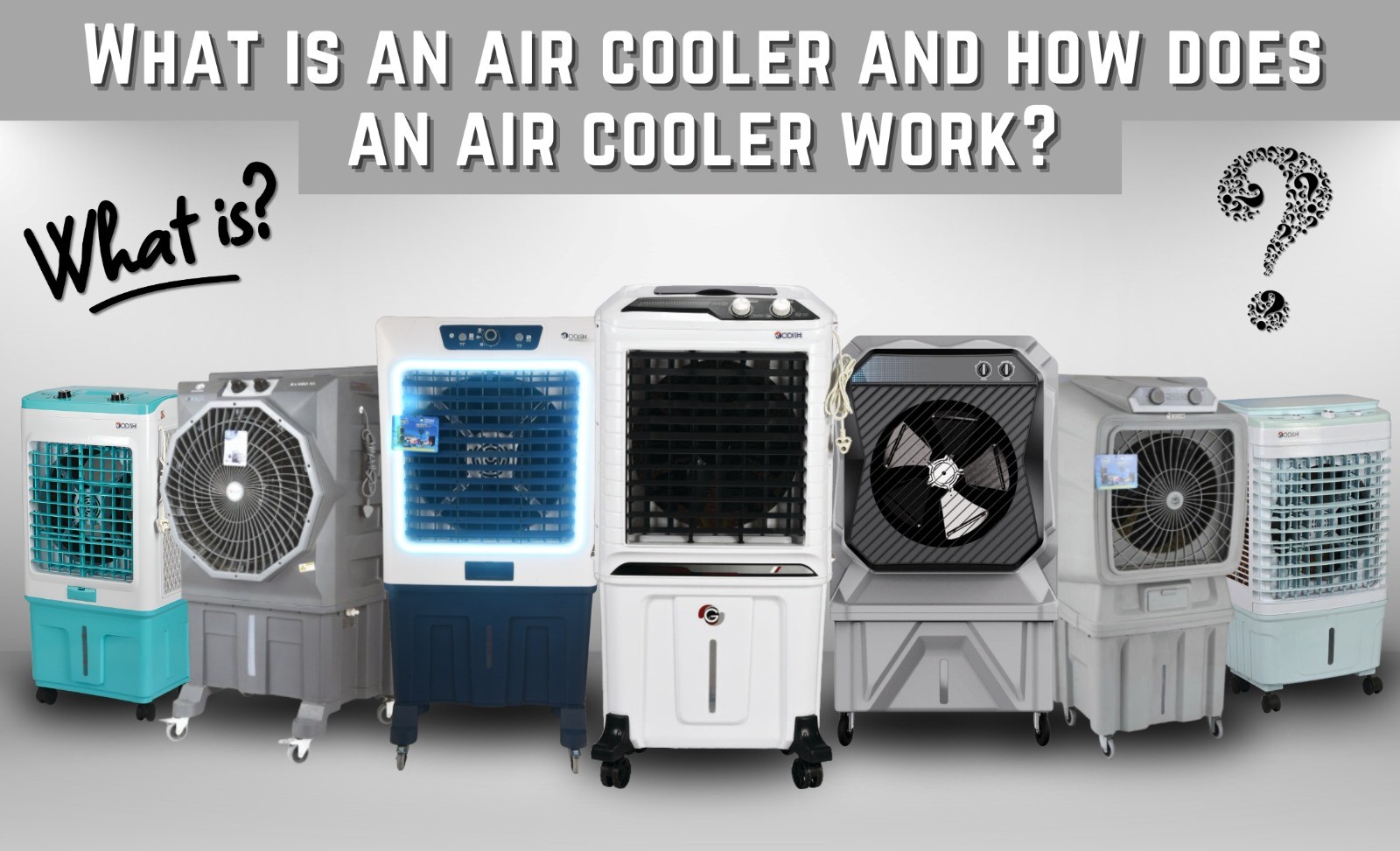How does an air cooler work?
When summer temperatures soar, the need for an efficient and affordable cooling solution becomes a top priority. But what is an air cooler, and how does an air cooler work? Unlike air conditioners, which consume more power and require installation, air coolers are eco-friendly, cost-effective, and ideal for Indian households. Let’s dive deep into understanding what an air cooler is and how an air cooler works.
What is an air cooler, and how does an air cooler work in simple terms?
An air cooler, also known as an evaporative cooler or desert cooler, is a cooling device that uses the natural process of water evaporation to cool air. So, what is an air cooler, and how does an air cooler work from a technical standpoint?
When hot air passes over water-saturated cooling pads inside the air cooler, the water evaporates and absorbs the heat, thereby lowering the temperature of the air. The fan or blower then circulates this cool air into the room. This process mimics the natural cooling you feel near waterfalls or during a breeze after rain.
What is an air cooler?
If you’re still wondering what an air cooler is, here’s a simple definition:
An air cooler is a portable or fixed appliance that cools air by passing it through wet cooling pads and then blowing it into your space. These coolers use water as the main cooling agent and are highly energy-efficient compared to traditional air conditioning systems.
Key Features of an Air Cooler:
1. Environmentally Friendly: Uses water, not harmful refrigerants
Air coolers operate using water for the cooling process, unlike air conditioners, which use chemical refrigerants that can harm the environment. This makes air coolers a more eco-conscious choice, especially in areas concerned with reducing carbon footprint and greenhouse gas emissions.
2. Cost-Efficient: Lower electricity consumption
Air coolers consume significantly less electricity compared to air conditioners. This makes them an affordable cooling solution for homes and commercial spaces, especially in areas where prolonged use of cooling devices is needed during summer months.
3. Portable Options Available: Easy to move around
Many air coolers come with wheels or compact designs, allowing users to easily move them from one room to another. This portability adds convenience and flexibility, especially for households that want targeted cooling in different areas throughout the day.
4. Low Maintenance: Minimal servicing required
Unlike air conditioners, which often require professional servicing, gas refills, and duct cleaning, air coolers are simple to maintain. Regular cleaning of the water tank and cooling pads is usually enough to keep them running smoothly, reducing ongoing maintenance costs and hassle.
How Does an Air Cooler Work?
To understand how an air cooler works, think of the cooling sensation you feel when sweat evaporates from your skin. Air coolers operate on this very principle—evaporative cooling.
Here’s a step-by-step breakdown of how an air cooler works:
1. Water Tank
This is the reservoir inside the air cooler where water is stored. The cooler must be filled with water for it to function. It’s the starting point of the cooling process since this water is used to soak the cooling pads.
2. Cooling Pads
These are specially designed pads placed on the sides of the cooler. They soak up the water from the tank and become wet. When hot air passes through them, these pads facilitate the evaporation of water, which leads to cooling of the air.
3. Fan/Blower
The fan or blower is the mechanical component that pulls in hot air from outside the cooler. It’s also responsible for pushing the cooled air into your room. While fans are typically used in residential air coolers, blowers are more powerful and used in larger or industrial models.
4. Evaporation Process
This is the core of the cooling mechanism. As the warm air comes in contact with the wet cooling pads, the water begins to evaporate. Evaporation is an endothermic process, meaning it absorbs heat, resulting in a significant drop in air temperature.
5. Cool Air Circulation
Once the air is cooled through evaporation, the fan or blower distributes this cooled air into the room or space. This is the final stage, delivering refreshing, cooler air to your environment.
Why Choose an Air Cooler from Modish Home Appliances?
At Modish Home Appliances, we specialize in high-performance, durable, and energy-efficient air coolers designed for Indian weather conditions. Whether you need a compact cooler for your home or a large industrial unit for a commercial setup, we have the right solution.
Contact Us
Contact us today to find the perfect cooling solution for your facility! For inquiries and expert consultation, reach out to us at:
📞 +91 78678 66869
📧 modishenterprisess@gmail.com
📱 Follow us on Instagram for the latest updates and offers: @modishhomeappliances
FAQs on Air Cooler Working
1. Can You Use an Air Cooler Without Water?
Yes, an air cooler can run without water, but it will only function as a basic fan. For effective cooling, water is essential, as it enables the evaporative process that lowers the air temperature. Without water, the cooler cannot produce the refreshing cool air it’s designed for.
2. Is the cooling from an air cooler the same as an AC?
While air coolers do a great job of lowering room temperature, they don’t cool the air as deeply as an air conditioner. Coolers use natural evaporation, making the air feel fresher and more breathable, but not as chilled as ACs that use refrigeration systems. They’re ideal for dry climates and well-ventilated spaces.
3. How does an air cooler deliver cool air?
Air coolers pull in warm air from the environment and pass it through water-soaked cooling pads. As the air moves through the wet pads, water evaporates, which cools the air. This cooled air is then circulated into the room, offering a natural and energy-efficient cooling experience.
4. Can an air cooler be used in a closed room?
Air coolers can operate in a closed room, but for best performance, some airflow or ventilation is recommended. Proper cross-ventilation allows the cooler to pull in warm air and expel humid air, maintaining a consistent cooling effect. Without fresh air circulation, the cooling efficiency may reduce over time.


